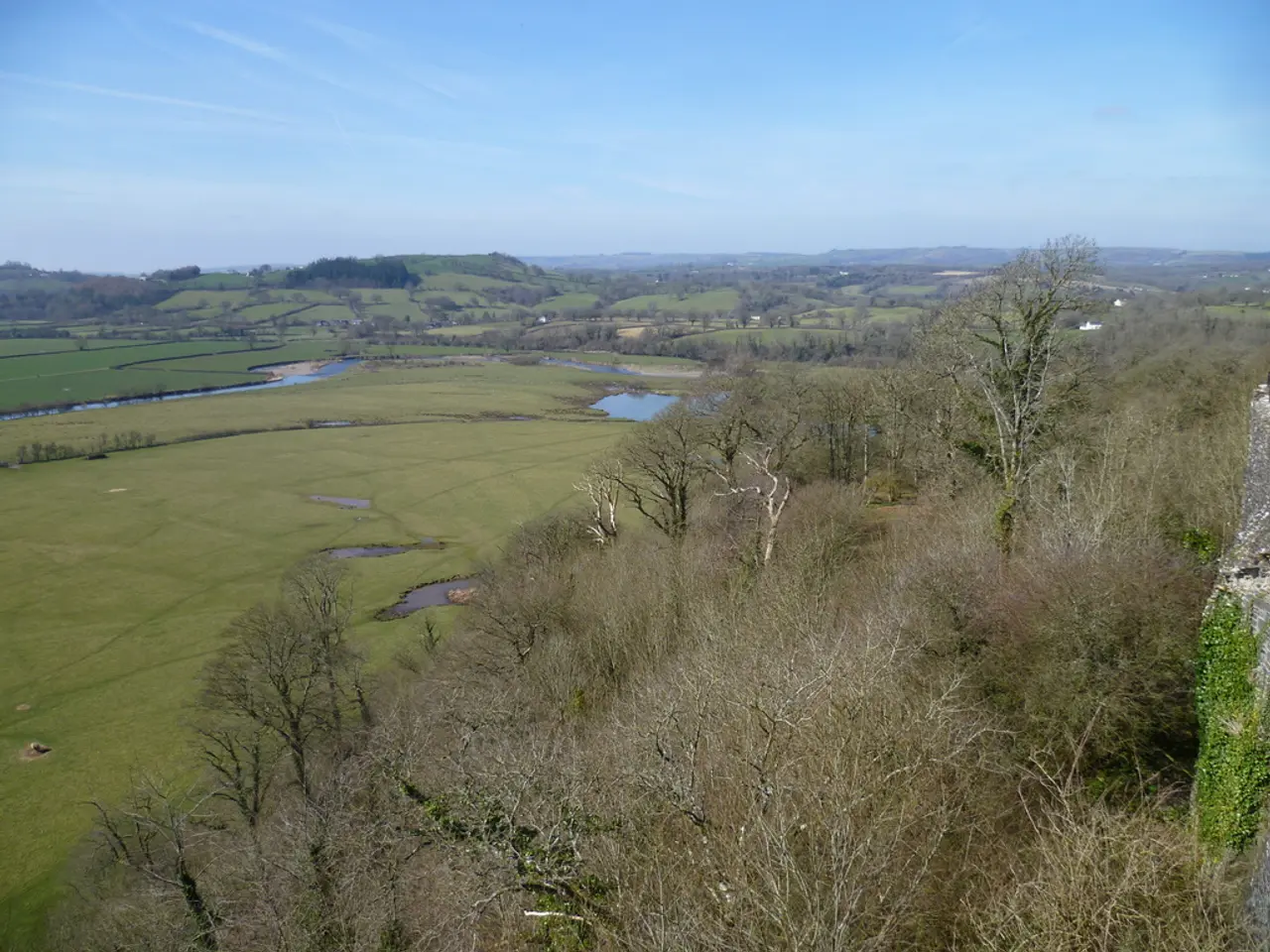Agricultural runoff protection in waterways is optimally provided by constructed wetlands, according to a recent study.
In a groundbreaking research, a collaboration of multiple programs and agencies has found that a collaborative approach is crucial for effective conservation efforts using wetlands, particularly in agricultural regions prone to runoff.
The study, published in the Proceedings of the National Academy of Sciences with the DOI 10.1073/pnas.2024912118, was conducted in the Le Sueur River Basin in southern Minnesota, a watershed known for its intense agricultural production of corn and soybeans.
Constructed wetlands, which slow down water as it heads towards streams and rivers, were found to be particularly effective. These wetlands contain vegetation and microbes that can process nutrients used as fertilizer on crops, removing nitrate from the water and holding water back during high flows, reducing the amount of near channel sediment that's being transported downstream.
Amy Hansen, a researcher from the University of Kansas, stated, "Microbes and plants within wetlands play a significant role in removing nitrate from the water, while fluvial wetlands help in holding water back during high flows, reducing the amount of near channel sediment that's being transported downstream."
The researchers also concluded that current methods of managing non-point sources of pollution, which rely on voluntary participation by individual farms, are less effective. Instead, they suggest that implementing conservation efforts using wetlands should be done at the watershed scale, rather than focusing on individual farms.
Jacques Finlay, a professor at the University of Minnesota, echoed this sentiment, stating, "A business-as-usual approach will not make real progress toward improving water quality in agricultural areas. A comprehensive strategy must address an entire watershed as a system, combining funds from different programs and agencies and pinpointing locations for fluvial wetlands that will lead to the greatest reduction in nitrates and sediments reaching waterways."
The performance of wetlands requires optimal placement, but cost-effective wetlands can be too expensive for a single farm or one agency to put in place. The new study in the Proceedings of the National Academy of Sciences emphasizes the economics of implementing small, shallow fluvial wetlands and stabilizing ravines.
The collaboration was supported by the USDA (United States Department of Agriculture), EPA (Environmental Protection Agency), and several Midwestern universities in applying comprehensive strategies to reduce nitrogen and sediment pollution in Midwest U.S. cropping regions. The research group also received support from the National Science Foundation.
Excessive nitrate or sediment in water can affect local fish populations, the cost of treating drinking water, and cause downstream effects such as algal blooms or hypoxic or 'dead zones.' The researchers found that these measures are more cost-effective than field management.
The researchers used the Le Sueur River Basin as a proof-of-concept watershed, but their findings could be applied to agricultural regions throughout the Midwest. The study underscores the need for a systemic approach to addressing water pollution in agricultural regions, highlighting the potential for significant improvements in water quality through the strategic placement of constructed wetlands.








